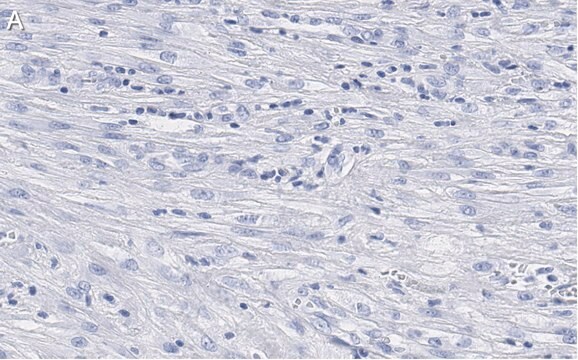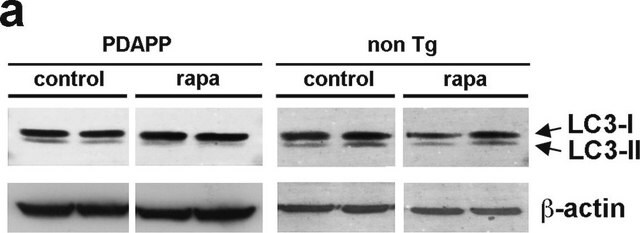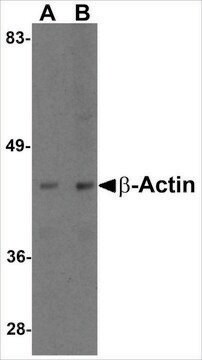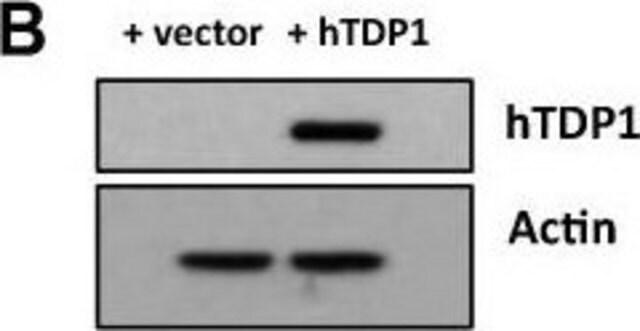A1978
Anti-β-Actin (ACTB) Antibody
mouse monoclonal, AC-15
Synonim(y):
Monoclonal Anti-β-Actin
About This Item
Polecane produkty
Nazwa produktu
Anti-β-Actin antibody, Mouse monoclonal, clone AC-15, purified from hybridoma cell culture
pochodzenie biologiczne
mouse
białko sprzężone
unconjugated
forma przeciwciała
purified immunoglobulin
rodzaj przeciwciała
primary antibodies
klon
AC-15, monoclonal
Formularz
buffered aqueous solution
masa cząsteczkowa
antigen 42 kDa
reaktywność gatunkowa
sheep, carp, feline, chicken, rat, mouse, Hirudo medicinalis, rabbit, canine, pig, human, bovine, guinea pig
spodziewany brak reakcji z
Dictyostelium discoideum
metody
immunocytochemistry: 10-40 μg/mL using human foreskin fibroblasts
immunohistochemistry (frozen sections): suitable
indirect immunofluorescence: suitable
microarray: suitable
western blot: 0.5-1 μg/mL using cell extract of human foreskin fibroblasts or chicken fibroblasts.
izotyp
IgG1
numer dostępu UniProt
Zastosowanie
research pathology
Warunki transportu
dry ice
temp. przechowywania
−20°C
docelowa modyfikacja potranslacyjna
unmodified
informacje o genach
human ... ACTB(60)
mouse ... Actb(11461)
rat ... Actb(81822)
Szukasz podobnych produktów? Odwiedź Przewodnik dotyczący porównywania produktów
Opis ogólny
In staining of chicken gizzard ultrathin tissue cryosections, the antibody labels the dense bodies and longitudinal channels linking consecutive dense bodies that are also occupied by desmin and the membrane-associated dense plaque. It does not stain adult cardiac and skeletal muscles except for traces due to contaminations of the sample with non-muscle cells, or if embryonic tissue is being used.
Specyficzność
Immunogen
Zastosowanie
The antibody can be used for staining of acetone-fixed frozen sections, EM preparations, and microinjection experiments. B5, ethanol, methacam, or Bouin′s solutions can be used as fixatives. The epitope recognized by the antibody is resistant to formalin-fixation and paraffin-embedding.
Monoclonal anti-beta-actin antibody can be used for microarray, indirect immunofluorescence, and immunohistochemical analyses. Furthermore, the product has been used for immunocytochemistry at 10-40 μg/mL using human foreskin fibroblasts. The antibody has also been used for western blot at 0.5-1 μg/mL using cell extract of human foreskin fibroblasts or chicken fibroblasts.
The antibody can be used for staining of acetone-fixed frozen sections, EM preparations, and microinjection experiments. B5, ethanol, methacam, or Bouin′s solutions can be used as fixatives. The epitope recognized by the antibody is resistant to formalin-fixation and paraffin-embedding.
It has been used in Immunoblot analysis.
Działania biochem./fizjol.
ACTB (β-actin) is crucial for organogenesis, especially for the development of brain, kidney and heart. It is responsible for maintaining cell proliferation, migration and shape. Actin protein is essential for the formation of mature platelets. β−Actin plays a key role in embryonic development. Upregulation of β-actin stimulates membrane protrusions and helps in cellular motility. The encoded protein β-Actin mediates fibroblast migration in mouse and thereby control connective tissue tension.
Actin is a cytoskeletal protein that regulates cell motility, secretion, phagocytosis and cytokinesis. The NH2-terminal of actin may function as an antigen. This terminal may also modulate actin interactions and may associate with proteins such as myosin.
Postać fizyczna
Uwaga dotycząca przygotowania
Inne uwagi
Oświadczenie o zrzeczeniu się odpowiedzialności
Nie możesz znaleźć właściwego produktu?
Wypróbuj nasz Narzędzie selektora produktów.
polecane
Kod klasy składowania
10 - Combustible liquids
Klasa zagrożenia wodnego (WGK)
WGK 3
Temperatura zapłonu (°F)
Not applicable
Temperatura zapłonu (°C)
Not applicable
Wybierz jedną z najnowszych wersji:
Masz już ten produkt?
Dokumenty związane z niedawno zakupionymi produktami zostały zamieszczone w Bibliotece dokumentów.
Klienci oglądali również te produkty
Produkty
Immunofluorescencja wykorzystuje cząsteczki fluorescencyjne sprzężone z przeciwciałami do lokalizacji białek, potwierdzania modyfikacji i wizualizacji kompleksów białkowych.
Nasz zespół naukowców ma doświadczenie we wszystkich obszarach badań, w tym w naukach przyrodniczych, materiałoznawstwie, syntezie chemicznej, chromatografii, analityce i wielu innych dziedzinach.
Skontaktuj się z zespołem ds. pomocy technicznej












